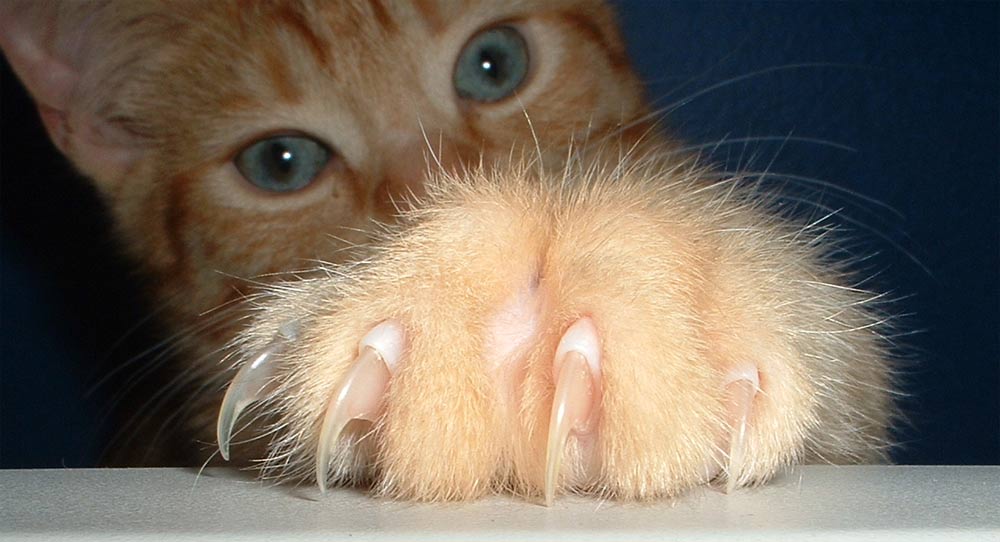
We’re about to weigh in on a rather heated debate: is declawing cats right? It’s an issue that has been raised many times and one that everyone seems to have an opinion on. It’s something that most cat experts will tell you to avoid, and rightly so, but is there any merit to it? We’ll try to look at both sides of the argument, but our own opinion is that it’s a barbaric practice.
Why Declawing Cats is Wrong
Firstly, the declawing process is barbaric, much more so than people think. There is a general misconception about this sort of thing, just as there is a misconception about clipping a bird’s wings or shortening a dog’s tail. It’s something we do to make our lives easier and something we don’t give much thought to, but we’re taking away a major part of the animal and we’re doing it in a way that will leave them both physically and mentally scarred.
Declawing cats should be considered a form of animal cruelty. It’s forcing suffering on an animal for your own benefit and it’s doing so in a way that completely ignores or refuses to acknowledge how they might be suffering. Declawing is not a simple act of permanently trimming their nails or somehow removing them but leaving the cat fit and healthy. That might be what you trick yourself into believing, but that’s not what happens.
Some pet owners seem to believe that declawing is just like removing a human’s fingernails. They accept that it’s not ideal, but don’t think it’s barbaric. But the truth is that it’s akin to hacking off your fingers at the final joint, which is a good couple inches beyond the fingernail and well into flesh and bone territory.
Why You Should not Declaw Cats
Cats need their claws. They rely on them to play, to climb and to feel safe. I trim my cats’ claws every now and then just to save wear and tear on my furniture and to avoid too many injuries when they play with each other. As soon as they are trimmed, those cats become stumbling idiots. They can not longer grasp their tree and climb up it like they usually do. They can’t use the scratching post and they generally struggle until the points of the claws grow back in a day or two.
You can see that it affects them even in that short time and even though they still have claws, so I can’t begin to imagine how horrible it must be for a cat to suffer like that forever. What’s more, there are also issues with the litter box as cats that have been declawed tend to have very sensitive pads and are unable, or rather unwilling, to walk over the litter.
Pros to Declawing Cats
It’s hard to find a positive reason to do something so cruel. They do exist, but at the same time you could make a case for male castration at birth purely because it gives them a higher-pitched singing voice. In other words, just because you can find a marginal positive, doesn’t stop this being a huge negative.
The only positive that we are willing to consider is that declawing a vicious, aggressive shelter cat may be the only way to get it adopted. But that’s not entirely true. You’re not changing its behavior, you’re just taking away its weapons (although it still has teeth, and they can do a lot more damage).
There are better ways to tame a cat like this and by hacking off its claws you’re only going to make it angrier and less trusting of humans. You will also potentially take away any chance it has of ever using a litter box, which turns an aggressive territorial cat into an aggressive territorial cat that can’t claw you but will pee and poop everywhere.
Personally, I’d take a few scratches over a “present” left on my pillow any day and as someone who has seen cats go from bad to good and owns some of the sweetest, tamest cats you’ll ever meet, I know how easy it can be to win over the affections of even the most aggressive feline. Just ask Jackson Galaxy.